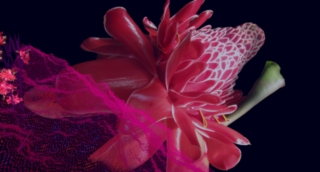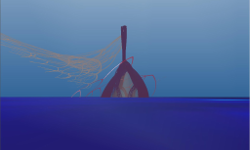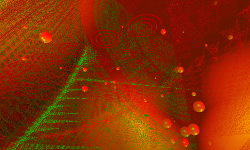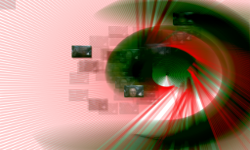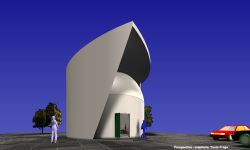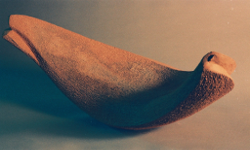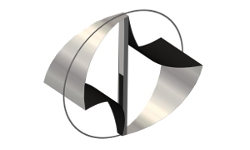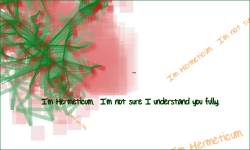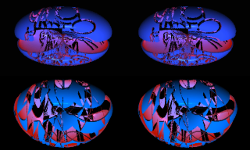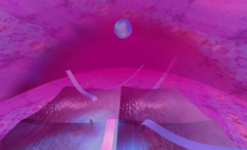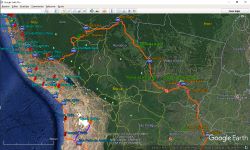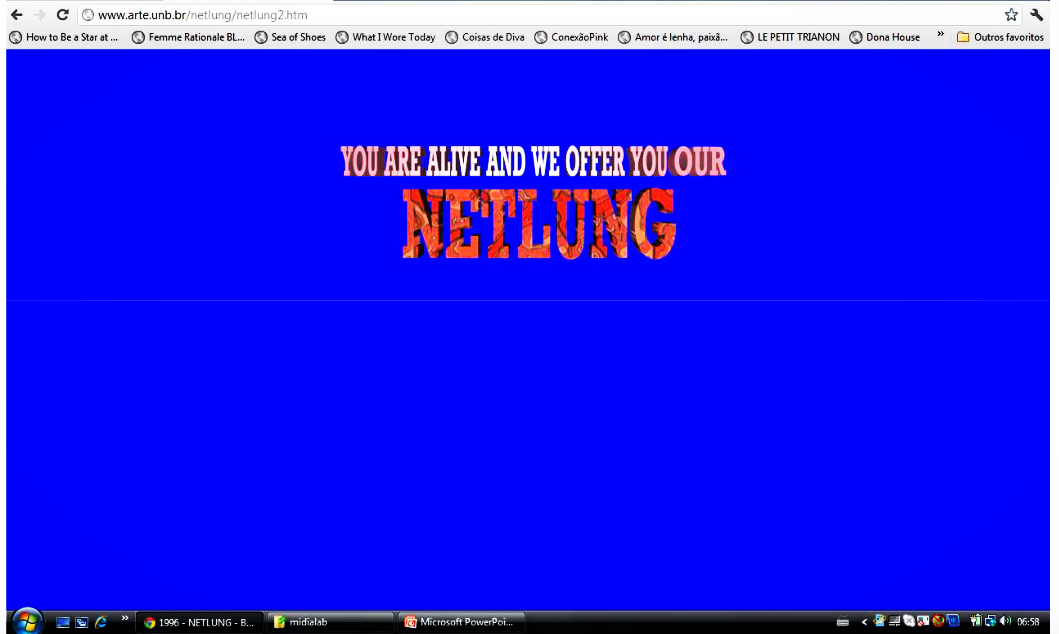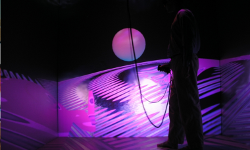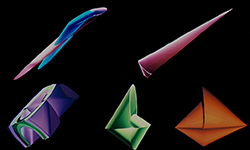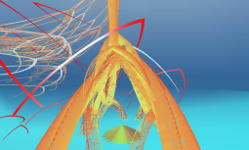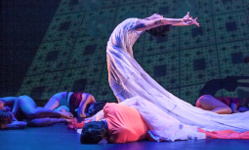
Computer Art | Arte Computacional
|
My approximation with Computer Art began slowly. In 1970, while I was in the first year of architecture, I had my first course about computer fundamentals, at UFMG.
The language was called FORTRAN and was very suitable for solving mathematical equations. The computer was made up of a giant CPU and communicated with us through a green phosphor screen and a type printer. It was programmed through cards that were pierced with holes like today one can see in museums.
At that time I had already fallen in love with mathematics and realized that through analytical geometry and linear algebra it would be possible to draw using the types available on the keyboard and printer. At that time I did not find in my way a professor Giorgio Moscatti or Thomas Banchoff and I was called as crazy.
During my Master Degree I tried again, this time with the help of statistics Vera Pastori. The excuse of the processing center of UnB for not to helping me to make the program was that could do it 'by hand'. What is now called 'proof of concept' was not a usual practice at that time. A pity. Sometimes it seems to me that I was born just before my time.
Fascinated by Lázloó Moholy-Nagy, who in 1921 commissioned by telephone, in an industry, the serie "Telephone Paints" from a set of instructions, I foresaw the possibilities offered by a similar approach by working with computer languages programs.
This posture served me as a guiding beacon. It can also be found in Mallarmé, in Laban, in John Cage, and here in Brazil in Athos Bulcão, among many others. Many of my ideas about COMPUTER ART are expressed in the presentations, articles and essays I heve written. Some of them are linked bellow.
Minha aproximação com a Arte Computacional começou aos poucos. Em 1970, no primeiro ano de arquitetura, fiz meu primeiro curso de fundamentos de computador na UFMG.
A linguagem chamava-se FORTRAN e era muito adequada para a resolução de equações matemáticas. O computador era formado por uma CPU gigante e se comunicava conosco através de uma tela verde de fósforo e uma impressora de tipos. Era programado através de cartões que eram perfurados com furinhos como hoje pode-se ver nos museus.
Nessa época já havia me apaixonado por matemática e percebi que através de geometria analítica e álgebra linear seria possível desenhar usando os tipos disponíveis no teclado e na impressora. Não encontrei no meu caminho um professor Giorgio Moscatti ou Thomas Banchoff e fui chamada de louca.
Durante o mestrado tentei novamente, desta vez com o auxílio da estatística Vera Pastori. A desculpa do CPD da UnB para não me ajudar a realizar o programa foi que poderia fazê-lo ‘na mão’. Aquilo que hoje é chamado de ‘prova de conceito’ não era prática usual na época. Uma pena. Às vezes me parece que nasci antes da hora.
Fascinada com a proposta de Lázloó Moholy-Nagy que em 1921 encomendou por telefone, numa indústria, a série "Telephone Paints" a partir de um conjunto de instruções, antevi as possibilidades que se ofereciam com o enfoque similar que é o trabalhar com a programação de linguagens computacionais.
Essa postura me serviu como um farol orientador e pode, também, ser encontrada em Mallarmé, em Laban, em John Cage, e aqui no Brasil em Athos Bulcão, entre muitos outros. Muitas das minhas ideias sobre ARTE COMPUTACIONAL são expressas nos artigos, ensaios e apresentações que tenho escrito. Alguns deles estã nos links abaixo.
Salvar